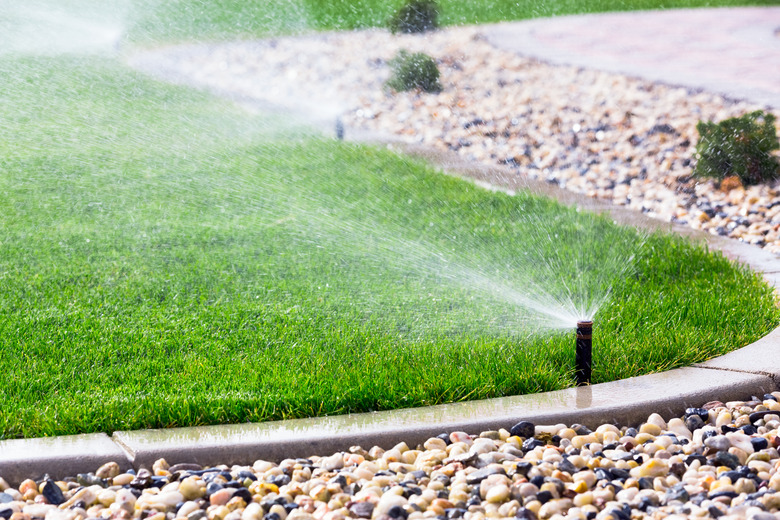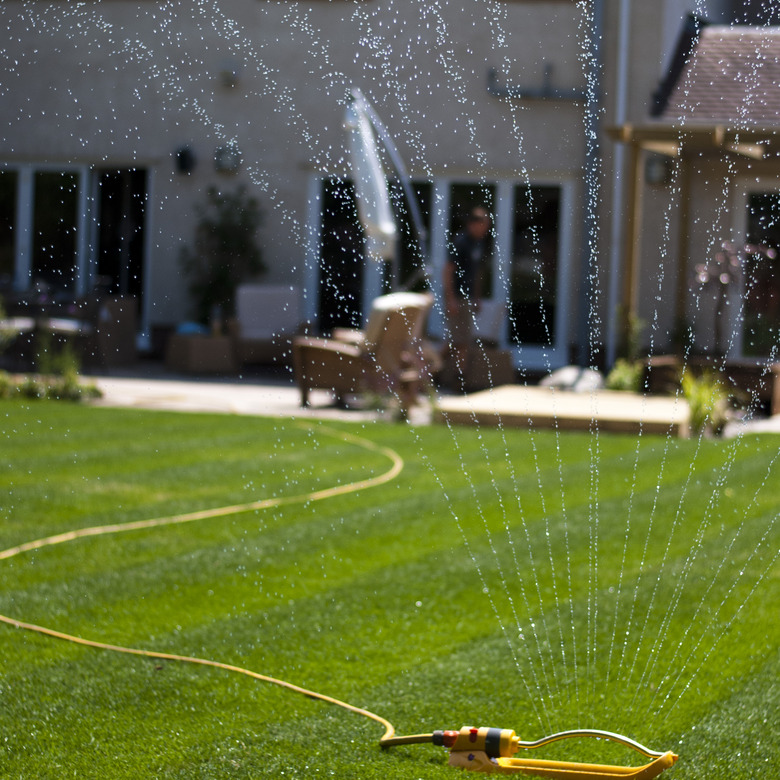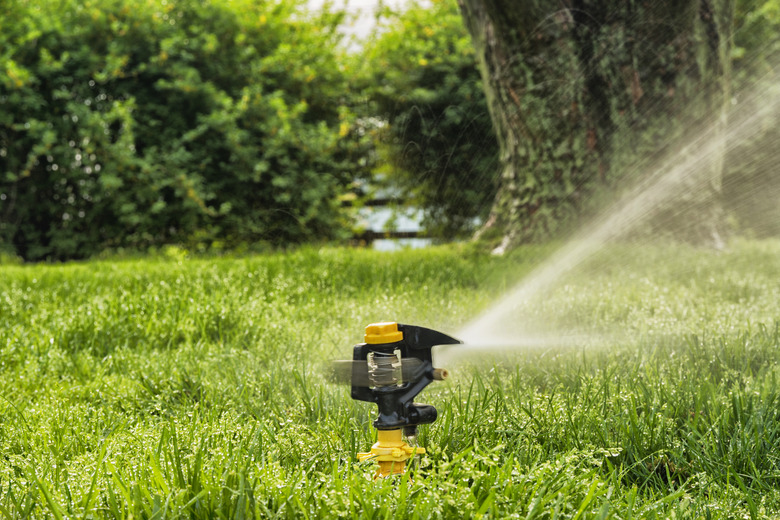7 Best Lawn Sprinklers For Every Yard Area
We may receive a commission on purchases made from links.
If your yard has grass, it goes without saying that you'll need a garden sprinkler of some kind, and it only makes sense that you'd want to buy one of the best lawn sprinklers available. When it comes to buying a lawn sprinkler, each type of sprinkler has its own pros and cons, making it useful for one purpose while impractical for another.
So, should you buy a turbo oscillating sprinkler, an impact sprinkler, a spot stationary sprinkler, a traveling sprinkler or another type altogether? Well, it depends on the size and shape of the space you need to water, how established your grass is, your home's water pressure, whether or not you mind a noisy sprinkler or if the appearance of the sprinkler itself is important to you.
Choosing the Best Lawn Sprinklers for Your Yard
Choosing the Best Lawn Sprinklers for Your Yard
When choosing the best lawn sprinklers, it's important to consider your individual needs. Some sprinklers require a higher water pressure than is available in some homes. Some sprinklers spray with a pressure too high for newly seeded lawns.
One key factor to consider is the size and shape of your yard. A far-reaching sprinkler is overkill in a small yard, and wasting water isn't just bad for the environment but it's also bad for your wallet. That's why ideally, your sprinkler should cover your grass area but not spray all over your sidewalk or fence.
Remember that your goal isn't to water the grass blades but the soil beneath. This means for effective watering, you need to adjust your watering according to your soil and grass location. Shady areas need less water than sunny ones, and when it rains, you may not need to water at all. Hard, compacted or clay soils take longer to absorb water, so it's preferable to have a sprinkler that sprays less water at a time and then runs longer, giving the soil more time to absorb the water so it doesn't pool on or run off your grass.
When choosing a sprinkler, also consider the device's quality and features. Some sprinkler models offer special settings that can help you tailor the spray to your lawn or garden area, and some even have shutoff timers. If you have hard water, look for a sprinkler with a filter so you can avoid plugging up the inside of the garden sprinkler with hard-water deposits. Metal sprinklers made from rustproof materials are generally preferable over plastic ones that will become brittle and crack in the sun.
1. The Oscillating Sprinkler
1. The Oscillating Sprinkler
Many people have fond childhood memories of running through the spray of an oscillating sprinkler as it shot high water streams while sweeping back and forth. These sprinklers are easily identified, as they feature a long bar fitted with a row of holes that moves from left to right. For the best coverage, look for a model with 15 holes or more.
- About the spray: The spray comes out in a rectangular pattern. Some devices have knobs that
allow users to adjust the distance and shape of the spray; those without knobs
must be adjusted by changing the incoming water pressure. The maximum distance that an
average oscillating sprinkler can spray is a coverage area of about 20 feet, which is a good size
for small and medium-size lawns. - Best uses:
Small to medium, rectangular yards; homes with kids, as these not only provide lawn watering but also summer entertainment. - Pros:
They are inexpensive, and some can be manually adjusted to exactly fit your yard area. They are a
good size and shape for small, rectangular yards, and they efficiently cover the entire
area. - Cons: If your
yard isn't rectangular, then you'll have a bit of water runoff. Homes with
low water pressure may notice that the sprinkler doesn't spray far enough. Figuring
out the best settings requires a lot of time to fine tune the water pressure,
location and settings.
2. The Traveling Sprinkler
2. The Traveling Sprinkler
Also known as a tractor sprinkler, these are self-propelled and travel across your lawn, spraying water along a set path. Because they move on their own, they can spray a long distance without you having to move your sprinklers around manually. These are common sights on farms and sports fields.
- About the spray: The spray travels in a line based on how you arrange your garden hose,
meaning you can arrange it to cover large areas or oddly shaped areas. The
high water pressure required to propel them means they can even travel up hills and
uneven areas. - Best uses: Large
yards, oddly shaped yards and yards with hills or uneven ground. - Pros: They are a good
alternative for those who would otherwise need more than one sprinkler to cover
the whole area. They're useful for irregularly shaped grass areas and automatically shut off when their route is completed. - Cons: They don't
operate well without high water pressure. Pets may attack the sprinkler as it
moves, and they can be a little
expensive. Large rocks and downed limbs may impede the forward motion of a traveling sprinkler.
3. The Spot Sprinkler
3. The Spot Sprinkler
A spot sprinkler is a type of stationary sprinkler, meaning it has a fixed water pattern. It is one of the most basic types of sprinklers, as it is simply comprised of a sprinkler head fitted to a hose that is left on the grass.
- About the spray: Water is released in a single, stationary pattern. Some designs
are sold with multiple patterns to adjust the spray to better fit your lawn
area. While some can spray as far as 17 feet in one direction, most spray no
more than 15 feet in any direction. - Best uses: Small
yards and homes with low water pressure. - Pros:
They are inexpensive; in fact, these are generally the cheapest of all lawn sprinkler
options. They work well even with low water pressure, though lower pressure will
reduce the distance of the spray. They're available in both circular and square
patterns. - Cons: They only
spray in one specific pattern and have a smaller reach than most other options,
so unless you have a small lawn, you'll probably need to move the sprinkler at
least once to cover the entire area.
4. The Impact Sprinkler
4. The Impact Sprinkler
If you immediately hear a "chk-chk-chk" sound in your head when thinking about a lawn sprinkler, then you're thinking about an impact sprinkler, sometimes called a pressure or impulse sprinkler. These work by sending a forceful stream of water through a nozzle. As the water leaves the nozzle, it contacts a swinging hammer that bounces back and forth between the water stream and a fixed plate. The striking of the hammer against the plate causes the sprinkler head to rotate slightly to complete an arc pattern. For best results with an impact sprinkler, look for a heavy-duty model made from brass, which will not rust, bend or break.
- About the spray: These sprinklers can be set to go in full or partial circles. Because
these sprinklers create a single stream of pressurized water, they can spray a long distance, with some products claiming they can
reach up to 80 feet. - Best uses: Large,
established lawns. - Pros: They are relatively
inexpensive and can spray a long distance. Since the spray pattern can be set to a
circle or part of a circle, you may be able to adjust them to avoid your patio
or other areas you don't want to spray. - Cons: The spray
is always high pressure, making them too powerful for freshly seeded lawns.
Those with low water pressure won't have very good results. Some people don't
like how noisy they are. Because the spray is circular, most people will have at
least some runoff.
5. The Gear-Driven Rotor Sprinkler
5. The Gear-Driven Rotor Sprinkler
If you're looking for a hose-mounted sprinkler waterer that looks like it's part of an underground sprinkler system and doesn't make the loud noises of an impact sprinkler, you will probably like the gear-driven rotor sprinkler.
- About the spray: The gears spray the water in a programmed arc of anywhere from 40 to 360 degrees and can spray a distance of up to 55 feet. Some models offer multiple spray patterns.
- Best uses: Medium to large yards, homes with poor water pressure.
- Pros: They can be set to a wide variety of angles and spray a fairly long distance. They work well with low water pressure and are good for people who do not like the appearance of other types of sprinkler heads.
- Cons: Because these designs are still relatively new, there are limited options on the market, and they can be a little more expensive than comparable products. If the gears get jammed inside the body, the sprinkler may become trash.
6. The Whirring Lawn Sprinkler
6. The Whirring Lawn Sprinkler
A whirring sprinkler is a type of rotating or rotary sprinkler that has multiple spinning arms adorned with holes from which water shoots. In fact, sometimes people call whirring sprinklers rotary or rotating sprinklers, though oscillating, gear drive and impact sprinklers all technically fit in this category. For best results, buy a design with four or more holes per arm.
- About the spray: As the arms rotate in circles, they throw water a long distance and much further than spot sprinklers – as far as 90 feet in a single direction. Because they have a smaller rate of precipitation, these sprinklers are a good option for hard soil that absorbs water more slowly, reducing pooling and runoff.
- Best uses: Large and medium yards and yards with hard soil.
- Pros: They are some of the longest-reaching sprinkler designs and are most effective for even water distribution, as they provide more time for soil to absorb moisture. They can be set to spray in specific patterns to ensure water goes where it is needed.
- Cons: They require a high amount of water pressure, ideally between 40 and 50 pounds per square inch.
7. The Ornamental Spinner Sprinkler
7. The Ornamental Spinner Sprinkler
Are you looking for something more decorative than a standard lawn sprinkler? A spinner sprinkler, sometimes called a spiral sprinkler, might be the right option for you. Whether they are in use or not, these sculptural sprayers make a lovely addition to any yard, which is not something you would ordinarily say about a sprinkler. These devices are generally made from one or two large copper pipes fixed to a long copper pipe that is set into the ground with one or two spikes. These are often adorned with glass balls, copper decorations and/or plastic gems. When in operation, the copper rings spin in circles (if there are two circles, they will spin in opposite directions), spraying water droplets in every direction.
- About the spray: The water sprays 360 degrees at a distance between 6 and 15
feet. - Best uses: They are nice for
adding an attractive touch to your landscape but are only useful in small spaces. - Pros: These are
one of the most attractive sprinkler options, and there are many one-of-a-kind,
artistic designs available. - Cons: They require
high water pressure, ideally around 50
pounds per square
inch and have very limited range.


